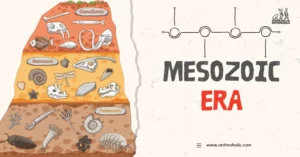AI Answer Evaluation Platform Live Now. Try Free Answer Evaluation Now
Quantitative Data
Quantitative data has long been a core component of anthropological research. Since the advent of cultural anthropology during the early 20th century, numerical and statistical methods have been employed to further our understanding of human cultures, behaviors, and societies [1].

Overview of Quantitative Data in Anthropology
In anthropology, quantitative data involves the collection and analysis of numerical information to reveal patterns, trends, correlations, or generalizations about the human condition. This can be gleaned from various sources such as population censuses, health records, economic indicators, or surveys.
For instance, an anthropologist studying dietary practices across cultures might employ quantitative methods to measure and compare food intake or nutritional indices. A seminal work in this regard is Murdock’s [2]. Ethnographic Atlas, which compiled quantitative data on a variety of cultural traits across hundreds of societies, providing invaluable insights into cross-cultural patterns and diversities.
While quantitative data provides rigorous, generalizable insights, it’s important to recognize that it is often complemented by qualitative data, offering a holistic understanding of human experiences [1].
Methodology
Research Design
In anthropological research, design is instrumental to the structure and execution of a study. A common research design is the cross-sectional study, where data is collected from a sample population at a specific point in time [1]. This is often employed in cultural anthropology to assess variations across different cultural groups or regions.
Data Collection Techniques
- Surveys: Surveys are standard instruments for collecting quantitative data. Anthropologists often use structured interviews or standardized questionnaires to gather information about beliefs, behaviors, and social practices.
- Questionnaires: Questionnaires, either self-administered or researcher-administered, are used to gather standardized data. In an anthropological study examining social networks, questionnaire items might include queries about respondents’ relationships and interactions.
- Experiments: Experimental methods are used less frequently in anthropology but can offer valuable insights. Laboratory or field experiments, for instance, can help determine causal relationships or test hypotheses about human behavior.
- Archival Research: Anthropologists may use archival data, such as historical documents, census data, or institutional records, to gather quantitative information.
Sampling Techniques
There are two types of sampling techniques in research: Probability Sampling Methods and Non-Probability Methods.
Probability sampling methods ensure each member of a population has a known, non-zero chance of being selected, facilitating the collection of unbiased, representative data. These techniques offer more precise and generalizable findings. Here are several types of probability sampling methods:
- Simple Random Sampling (SRS): In SRS, each individual in the population has an equal and independent chance of being chosen for the sample. This method ensures a high level of representativeness, and conclusions drawn from the sample can be generalized to the population. However, it requires an exhaustive list of all members in the population, which may not always be feasible.
- Systematic Sampling: This involves selecting a random starting point from the population list and then picking every nth element. The key benefit is its simplicity. But, the order of the list may introduce bias if there’s a pattern that coincides with the chosen interval.
- Stratified Sampling: The population is divided into homogeneous subgroups, or strata, and random samples are drawn from each stratum. This technique ensures representation of all key groups within the population and can increase the efficiency and precision of the estimate.
- Cluster Sampling: In this method, the population is divided into clusters, usually geographically. Random clusters are then chosen and all individuals within these clusters are included in the sample. This method can save time and resources when the population is geographically dispersed but might be less precise than simple random or stratified sampling.
Non-probability sampling techniques don’t give each member of a population a known chance of being included in the sample. These methods are often used when it’s not feasible to conduct probability sampling, and while they can be easier and cheaper to implement, they don’t allow for statistical inference about the entire population.
- Convenience Sampling: This is the most straightforward type of non-probability sampling, where participants are selected based on their availability or ease of access. It’s used when a random sample isn’t necessary or when it isn’t feasible to choose a random sample. However, the results may not be representative of the broader population.
- Snowball Sampling: Also known as referral sampling, this method is often used when it’s difficult to identify members of a desired population. Researchers start with a small pool of initial informants, then each of those informants provides referrals to other participants, creating a ‘snowball’ effect. This method is particularly useful when studying hidden or hard-to-reach populations.
- Quota Sampling: This method is the non-probability counterpart of stratified sampling. Researchers divide the population into specific groups based on relevant characteristics and then non-randomly select individuals from each group until the quotas are filled. The proportion of participants in each quota matches their proportion in the population.
- Purposive Sampling: In this method, researchers use their judgment to select participants who are most able to contribute useful data. For example, if conducting research on specialized practices within a culture, anthropologists might use purposive sampling to select individuals who are considered experts in those practices.
Data Analysis
Descriptive Statistics
Descriptive statistics summarize and describe the main features of a dataset. Anthropologists use them to provide a clear and concise summary of their data.
- Measures of Central Tendency: These include the mean (average), median (middle value), and mode (most frequent value). For instance, an anthropologist studying age at marriage in a community might use the mean age to describe the central tendency of their data.
- Measures of Dispersion: These describe the spread or variability of the data, including range, variance, and standard deviation. For instance, studying income distribution in a society, the range of incomes and the standard deviation can help understand economic inequality.
Inferential Statistics
Inferential statistics allow researchers to draw conclusions about a population based on a sample. They form the backbone of hypothesis testing in anthropological research.
- Hypothesis Testing: Hypothesis testing involves proposing a claim about a population parameter and then using sample data to test the claim. For instance, an anthropologist might hypothesize that there is a significant difference in fertility rates between two cultural groups.
- Confidence Intervals: These provide a range of values within which the population parameter is likely to fall. An anthropologist estimating the average number of children per woman in a community might report it as a range, giving a confidence interval.
- Correlation Analysis: This measures the relationship between two variables. For instance, an anthropologist might analyze the correlation between education level and income within a society.
- Regression Analysis: This allows researchers to predict the value of one variable based on the value of another. An anthropologist could use regression analysis to predict a community member’s social status based on variables like age, education, and occupation.
Comparisons with Qualitative Data
Advantages of Quantitative Data
Quantitative data provide numeric evidence that can be analyzed statistically to support or refute hypotheses about a population. The results are replicable, allowing for generalizability of findings. For instance, anthropologists might use quantitative data to measure the prevalence of a certain cultural practice in different societies.
Limitations of Quantitative Data
Despite its strengths, quantitative data isn’t well-suited to explore all research questions. It often fails to capture the richness and complexity of human experiences and doesn’t illuminate the meanings or interpretations people assign to their experiences. It also requires a larger sample size to be statistically significant and might oversimplify complex social phenomena.
Complementary Relationship between Quantitative and Qualitative Data
Qualitative and quantitative data serve complementary roles in anthropological research. While quantitative data can illustrate patterns and trends across a population, qualitative data can provide a deep, nuanced understanding of the cultural context and individual perspectives. For instance, an anthropologist might combine a quantitative survey of marriage patterns in a community with qualitative interviews to understand the underlying beliefs and norms influencing these patterns.
Summary of the Article’s Main Points
This article has comprehensively covered the concept, methodologies, analysis, and comparison of quantitative data in anthropological research. Quantitative data provides numerical evidence that facilitates a statistical understanding of phenomena, such as cultural practices or societal trends. Key methodologies discussed include research design, data collection, and sampling techniques, both probability and non-probability. The use of descriptive and inferential statistics in analyzing quantitative data has also been outlined, from measures of central tendency and dispersion to hypothesis testing and regression analysis. The advantages and limitations of quantitative data were considered alongside qualitative data, illuminating their complementary relationship in anthropological research.
Implications for Anthropology and Future Research
Quantitative data plays a crucial role in anthropology, providing a foundation for testing hypotheses and making generalizable conclusions. Yet, the importance of blending these approaches with qualitative methods to obtain a richer, more nuanced understanding of cultural phenomena has been highlighted. For future research, embracing a mixed-methods approach will continue to strengthen the anthropological understanding of human societies and cultures. As we navigate the evolving landscapes of research, the refinement of data collection techniques, alongside advancements in data analysis tools, will further enhance the application and utility of quantitative data in anthropology.
References:
[1] Bernard, H. R. (2011). Research Methods in Anthropology: Qualitative and Quantitative Approaches. AltaMira Press. https://ds.amu.edu.et/xmlui/bitstream/handle/123456789/11396/Russel-Research-Method-in-Anthropology.pdf?sequence=1&isAllowed=y
[2] Murdock, G. P. (1967). Ethnographic Atlas. University of Pittsburgh Press.




